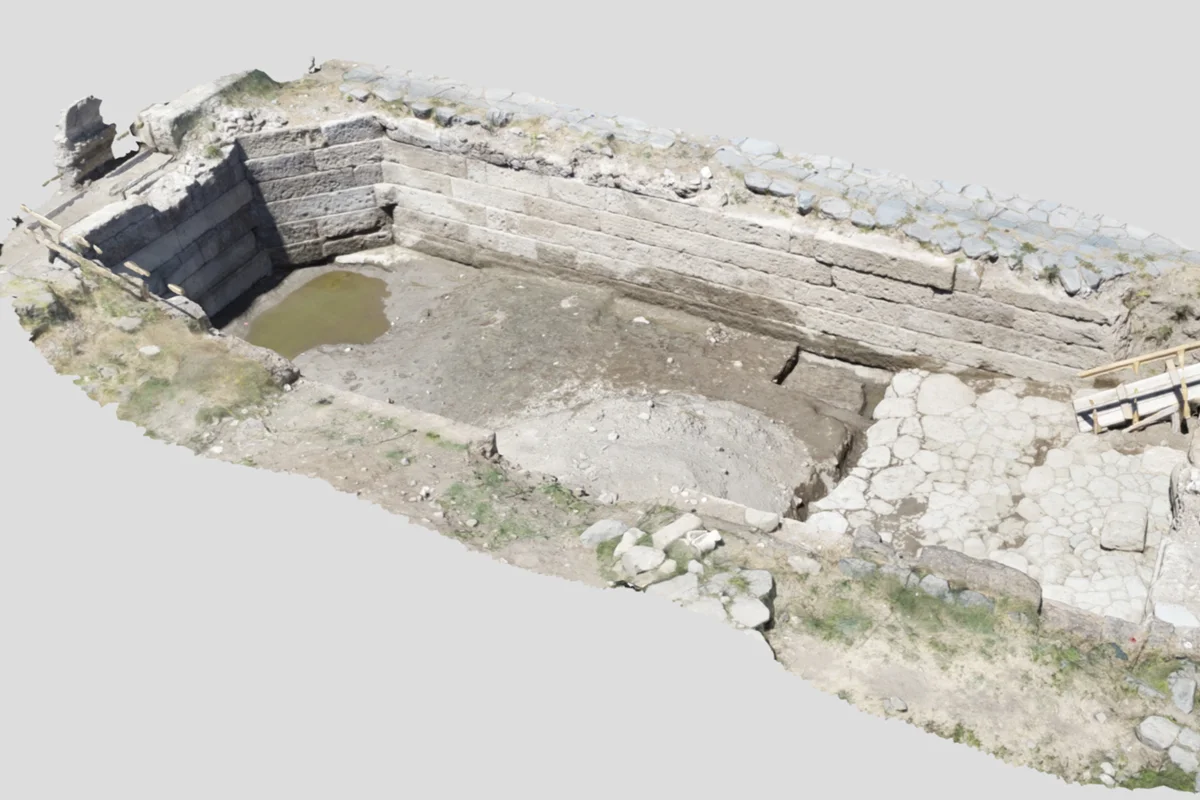Excavations by archaeologists from the University of Missouri have uncovered a massive stone-lined water basin in the Roman city of Gabii, just 11 miles east of Rome.
Led by Marcello Mogetta, chair of Mizzou’s Department of Classics, Archaeology and Religion, the team discovered the basin carved partly into the bedrock at the city’s centre, near its main crossroads.
Built around 250 BC (with sections possibly dating even earlier), the structure offers a rare glimpse into early Roman engineering and urban planning.
“This discovery gives us a rare look at how the early Romans experimented with city planning,” Mogetta said. “Its location suggests it may have been a monumental pool within the city’s forum — the public heart of Gabii. Since we still don’t fully know what the early Roman Forum looked like, Gabii offers an invaluable window into that evolution.”
Monumental architecture, Mogetta explained, was about more than practicality. It symbolized political power, civic identity, and Rome’s growing influence. The basin’s scale and craftsmanship indicate that even in this early period, Romans were already adapting ideas from Greek architecture — grand terraces, plazas, and public spaces that combined functionality with displays of authority.

The basin builds on previous discoveries by the Gabii Project, including the “Area F Building,” a terraced complex cut into the ancient volcanic crater on which the city was built. Together, these findings help reveal how Gabii’s design reflected a blend of Greek inspiration and early Roman ambition.
Gabii, once a powerful rival to Rome, was largely abandoned by 50 B.C., leaving its streets and foundations remarkably well preserved. Now protected as part of Italy’s Musei e Parchi Archeologici di Praeneste e Gabii, the site allows researchers to study an early Roman city largely untouched by later development.
Next summer, Mogetta’s team will continue excavations around the basin, including a stone-paved area and a thermal imaging “anomaly” that may indicate a nearby temple or civic building. Artifacts such as lamps, vessels, and inscribed cups suggest the basin may have played a role in ritual activities, possibly linked to its closure around 50 C.E.
Ultimately, the project seeks to answer a larger question: Did civic spaces or religious centres come first in Roman urban life? The answer could reshape our understanding of how Rome’s earliest monumental landscapes — and its identity as a civilization — first took form.
Header Image Credit : University of Missouri
Sources : University of Missouri

